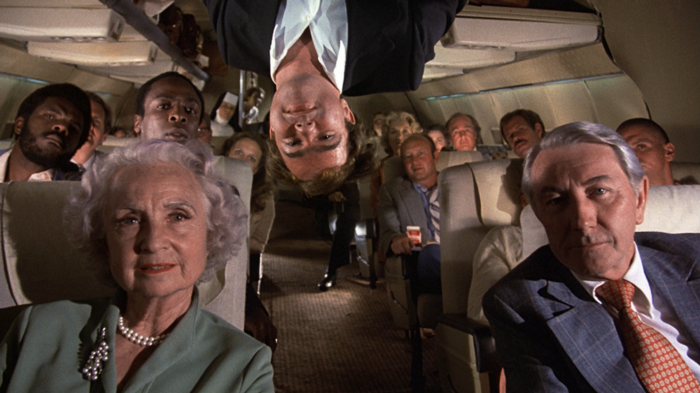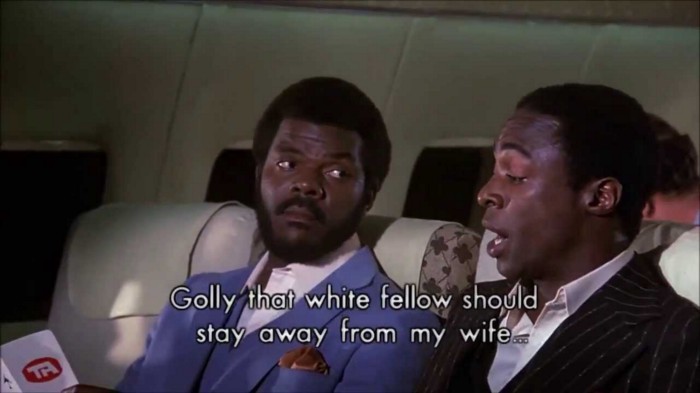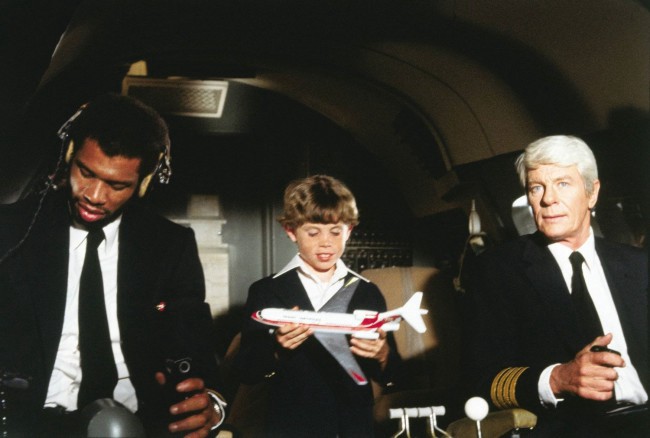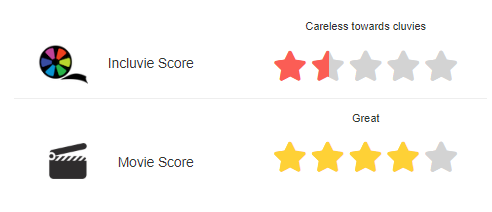Revisiting “Knives Out”- Now on Amazon Prime
Written and directed by Rian Johnson (Looper, Star Wars Episode VIII: The Last Jedi), Knives Out was one of the most clever and intricately crafted films of 2019.
Incluvie Foundation Gala - Learn More


Airplane! (1980) is a fun spoof comedy with lots of laughs, right? I watched this film on Netflix for the first time the other night. Instantly, I recognized so many references and clips that I had previously heard and seen. At every turn, it’s filled with great gags that are so incredibly clever and intelligently crafted. Even for someone watching it for the first time all these years later, I loved it.
Then came the racist jokes.
I think it’s easy for people to dismiss this as being a “product of its time.” I agree, but that doesn’t excuse the racism, nor does it mean that we can’t dissect why these jokes are problematic. If we gloss over casual racism in older movies, it doesn’t allow us to understand the issue with them; and if we don’t understand why they are problematic, then we can’t take the necessary steps to evolve as a culture.

Let’s start first with this: what is the kind of humor that Airplane! is embodying? From the very beginning, this is clearly a spoof comedy. It’s going for absurdism that largely comments on the stupidity of human beings. Common gags involve people misunderstanding each other (“don’t call me Shirley”), playing on expectations for how routine things operate (the announcers arguing in the airport), and visually contrasting what characters say is the case with what the reality is (the dance scene where Ted is stationed). These jokes are based on wordplay and expectations; essentially their craft is what makes them funny.
The jokes regarding race in the film are different; these jokes are not based on wordplay or craft, but are rather made at the expense of a particular group of people — specifically targeting them. The other gags in the movie relate in no way to race; anyone could have been at the center of those jokes and the intended effect of the gag would not have changed. The joke is based on something other than the identity of the character involved; they are merely a vessel for the punchline.
However, these jokes only feature white characters. The jokes involving people of color are usually based around that person’s color, whereas none of the jokes involving white characters specifically involve them being white. The identity of the character in these gags is irrelevant; the identity of the character in the jokes involving people of color is pertinent.

Throughout the movie, two Black men talk really fast to each other on the plane, with subtitles translating their “Jive” into English. Many of the other White passengers make periodic comments, saying they can “never understand them.” One of the White passengers turns out to be “fluent in Jive.” Many other momentary gags with people of color often involve them playing into some preexisting stereotype.
Airplane! makes it clear from the beginning that it is going for balls-to-the-wall absurdism: everything is a gag, and nothing is to be taken seriously. This makes it easy for some people to write off the more problematic race jokes as having no more stock than any other gag. When a joke goes after someone’s personal identity — their race, their gender, their sexual orientation, their physical attributes — they themselves become the joke. No longer are they merely a vessel for the joke, they are now the face of the punchline; and no one wants to be a face in a punch line.
It’s not even that these jokes aren’t funny in and of themselves; what matters is who is telling the joke. In the case of Airplane!, all three of the directors are white. There are also three additional white writers, and another three white producers. This is a team of all white men writing jokes targeting people of color, which immediately makes it a white interpretation of a person of color. This is where it turns from being merely a gag into a caricature.

When a person of color is involved in the joke’s craft, or is even the one telling it themselves, they are making the joke at their own expense. It doesn’t target a group of people different from themselves; it is based on their own identity. That becomes your joke to tell. Had this movie been directed by three Black people, with three additional Black writers, and another three additional Black producers, these jokes would hold no venom.
It isn’t the joke itself, but rather who is telling the joke, and who is the punchline.
Filmmaking is all about making mistakes so that other filmmakers can learn how to do it better. Inclusivity in Hollywood has changed drastically from 1980 to 2020. There are filmmakers working today who were inspired by Airplane! and other films of its time. What these filmmakers need to do is see where Airplane! went wrong, and then work to improve. It’s all about who is telling the story, and the filmmakers who are currently in positions of capability within the industry directly influence who the storytellers are.
Airplane! is a brilliantly crafted spoof comedy that should be timeless. With nonspecific jokes, there shouldn’t be a period of time where they don’t land. The race jokes, however, are specific, and in our period of time, they are uncomfortable to watch. As comedy fans revere Airplane! as one of the greats — and 80% of the film is phenomenally written and perfectly executed comedy — let us not gloss over the shortcomings of the filmmakers with these specific jokes. If we turn a blind eye, or chalk it up as merely being a “product of its time”, the filmmakers of today cannot learn from these shortcomings, and subsequently work to be better.

Author: Nathanael Molnar, originally published [7/10/2020]
Related lists created by the same author
Written and directed by Rian Johnson (Looper, Star Wars Episode VIII: The Last Jedi), Knives Out was one of the most clever and intricately crafted films of 2019.
Related diversity category
'Bodies Bodies Bodies', the latest from indie powerhouse studio A24, is a great time. Full of dark comedy laughs, great performances, and genuine scares, it's a perfect addition to modern slasher classics.